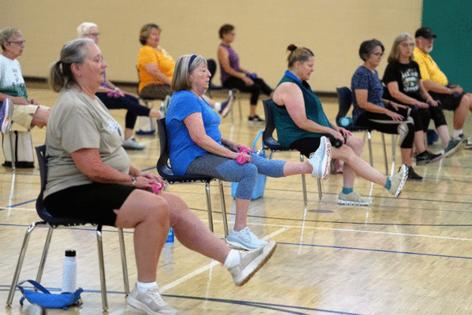Seniors are more likely to die in falls in this state than in almost any other
Published in Senior Living Features
MINNEAPOLIS -- Minnesota is on a top 10 list no one wants to be a part of, with the second-highest rate of deadly falls for people age 65 and older, after Wisconsin.
The deadly falls are twice the national average and rising.
Nearly 142 Minnesota seniors per 100,000 died from injuries sustained in a fall in 2021, according to recently released data from the Centers for Disease Control and Prevention. In Wisconsin, the number was just shy of 177.
In 2012, Minnesota’s rate was 100 deaths per 100,000 population and Wisconsin’s was 111.
State health officials and aging advocates say the worsening death toll is happening as the senior population is booming. More Minnesotans are turning 65 in the two decades from 2010 to 2030 than the previous four decades combined. By 2030, 1 in 4 Minnesotans will be 65 or older.
That makes reversing the rise in fatal falls even more challenging.
One way to do it is to channel more money into prevention efforts, said Mark Cullen, vice president of strategy and business development for Trellis, the state-designated agency on aging for the Twin Cities area.
“Once you get to a certain age, you’re going to fall. And the number of falls is going to keep going up if we don’t intervene,” Cullen said. “I think we’re going to get there because we’re going to be forced to.”
More than 14 million Americans age 65 and older — about 1 in 4 — report falling each year, according to the CDC. Falls are the leading cause of injury-related death among those 65 and older.
And the fall death rate is increasing. In 2012, the national rate was 55.3 per 100,000 older adults. By 2021, the rate increased 41% to 78 per 100,000.
Preliminary national data from 2024 shows fatalities ranging from 3,400 to 3,900 per month in 2024 — slightly higher than in 2023 and significantly higher than 2018.
With Wisconsin and Minnesota leading the pack, could ice and snow explain the higher number of deaths from falls? It’s not that clear-cut. The next eight states on the 2021 fall death list were South Dakota, West Virginia, Colorado, Oklahoma, Vermont, Maine, Oregon and Rhode Island. Alabama had the lowest rate of fatalities due to falls with 31 per 100,000, while Alaska had the lowest number, at 59.
Officials point to a number of factors for the doubling of deaths from falls in Minnesota between 2000 and 2021.
Kari Gloppen, an injury prevention program specialist with the state Department of Health, said in an email that research “has shown that increases in physical inactivity and social isolation (particularly during the COVID-19 pandemic) contributed to increased risk of falling.”
People who reported falling two or more times in the past year “were also more likely to report significantly higher prevalence of physical inactivity and loneliness compared with those who did not fall during the same time period,” she said.
Minnesota also has “excellent medical care,” helping older adults live longer, Gloppen and others said. As more Minnesotans survive chronic conditions like hypertension, arthritis and heart disease, they are also becoming frailer. An 85-year-old who falls and is injured is more likely to die than a 70-year-old.
According to the CDC, while death rates increased between 1999 and 2020 for all groups older than 65, the largest increase was for people 85 and older. Death rates from falls increased from 110.2 in 1999 to 291.5 in 2020.
At the same time, the rate for people ages 75 to 84 increased from 31.5 to 67.9 and for people age 65 to 74, it went from 9 to 18.2.
“This is significant, as frailty is highly predictive of fall injury and death,” Gloppen said.
Kaye Benson has been teaching Fit for Life classes at the Chanhassen Community Center for almost nine years. In classes with 15 to 20 seniors, the 78-year-old Bloomington resident teaches them how to avoid injury with improved strength, endurance, flexibility and balance.
“All of this helps avoid injury from falls,” Benson said of a repertoire that includes aerobic exercises and strength training. But, she said, “you can have a simple exercise like getting up on your toes while standing. That strengthens calves, feet, ankles.”
After years of working out, Benson said she’s fallen only once, on the ice, two years ago. She broke her wrist.
“Other than that, I’m pretty steady on my feet,” Benson said.
The key to getting seniors to start exercising is making it social and interesting, she said.
“Partly because nobody likes the word ‘exercise.’ And being on a machine is boring,” Benson said.
There are a range of services and recommendations, including the state Department of Health’s strategies to reduce the risk of falls, Gloppen said.
Reena Shetty, executive director of the Minnesota Board on Aging, said the board funds several programs designed to help prevent falls or improve accessibility for older adults or adults with disabilities — from exercise classes to home modifications, such as railings or ramps.
Despite enrolling thousands of seniors in such programs, it hasn’t been enough to slow the rise of deadly falls. The challenge is getting them to continue with the activities.
Siobhan McMahon, director of the Center on Aging Science and Care at the University of Minnesota, is an expert in the area of aging, including fall prevention, and said that, at some point, older people stop moving.
“Balance and strengthening exercises are really one of the top preventative actions. But it’s not only going to those classes; it’s also maintaining the movements that are learned and mastered in those classes,” she said. “So for eight or 12 weeks, it’s great. But then you stop doing them and the effect goes away within two weeks or so.”
The result is that most older adults stop their physical activity, McMahon said. While at the same time, officials don’t have enough data to know “how many people are doing their balance exercises three times a week.”
At Trellis, Cullen believes change is coming. Rising medical costs from the growing number of seniors falling and sustaining injuries will increase the incentive for Medicare and other insurers to better incorporate prevention programs into their plans, he said.
“We have to figure out how to align systems, to have a more integrated system,” Cullen said. “And we will.”









Comments